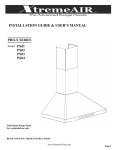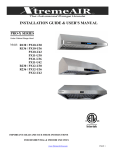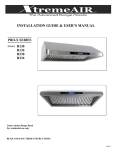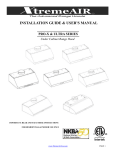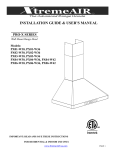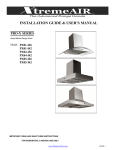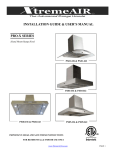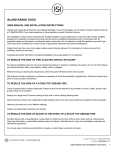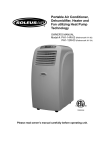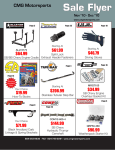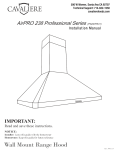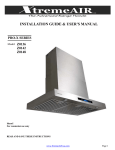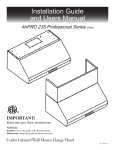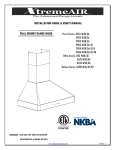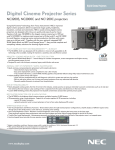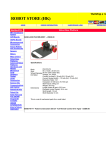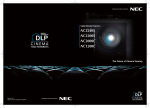Download INSTALLATION GUIDE & USER`S MANUAL
Transcript
INSTALLATION GUIDE & USER’S MANUAL PRO-X SERIES Model: PX04-I Island Mount Range Hood For residential use only READ AND SAVE THESE INSTRUCTIONS www.XtremeAirUsa.com Page 1 The manufacturer disclaims all liability for any damage or injury caused as a result of not following instructions for installation contained in the following text. TABLE OF CONTENTS • Important Safety Note.................................................3 • Parts supplied...............................................................4 • Tools needed................................................................5 • Venting methods..........................................................5 • Mount heights & clearance...........................................6 • Venting requirements....................................................6 • Electrical requirements..................................................7 • Installation....................................................................8-10 • Range hood operations.................................................11-12 • Troubleshooting............................................................12 • Use and care information..............................................13 • Maintenance..................................................................14 • Specifications................................................................15 • Replacing light bulb......................................................15 • Warranty & Customer Support.....................................16 IMPORTANT SAFETY NOTICE: www.XtremeAirUsa.com Page 2 Read all Instructions before Installing & operating this range hood 1. The installation in this manual is intended for qualified installers, service technicians or persons with similar qualified background. Installation and electrical wiring must be done by qualified professionals and in accordance with all applicable codes and standards, including fire-rated construction. 2. DO NOT attempt to install this appliance yourself. Injury could result from installing the unit due to lack of appropriate electrical and technical background. 3. Due to the size and weight of this range hood, two people installation is recommended. 4. Range hood may have very sharp edges; please wear protective gloves if it is necessary to remove any parts for installing, cleaning or servicing. WARNING - To reduce the risk of fire, electric shock, or injury to persons: 1. For general ventilating use only. DO NOT use to exhaust hazardous or explosive materials and vapors. 2. Ducted fans MUST always be vented to the outdoors. 3. Use only metal ductwork. 4. Old duct work should be cleaned or replaced if necessary to avoid the possibility of a grease fire. 5. Check all joints on duct work to insure proper connection and all joints should be properly taped. 6. The combustion air flow needed for safe operation of fuel-burning equipment may be affected by this unit’s operation. Follow the heating equipment manufacturer’s guideline and safety standards such as those published by the National Fire Protection Association (NFPA), and the American Society of Heating, Refrigeration and Air Conditioning Engineers (ASHRAE), and the local code authorities. 7. Sufficient air is needed for proper combustion and exhausting of gases through the duct to prevent back drafting. 8. Clean grease laden surfaces frequently. To reduce the risk of fire and to disperse air properly, make sure to vent air outside. DO NOT vent exhaust into spaces between walls, crawl spaces, ceiling, attics or garages. 9. When cutting or drilling into wall or ceiling, be careful not to damage electrical wiring or other hidden utilities. 10. All electrical wiring must be properly installed, insulated and grounded. 11. Before servicing or cleaning unit, switch power OFF at service panel and lock service panel to prevent power from being switched ON accidentally. 12. Use this unit only in the manner intended by the manufacturer. If you have questions, contact the vendor. WARNING - To reduce the risk of a stove top grease fire: 1. Always turn range hood ON when cooking at high heat or when cooking flaming foods. 2. Use high settings on cooking range only when necessary. 3. Never leave surface units unattended at high settings. Boil over cause smoking and greasy spillovers that may ignite. Heat oils slowly on low or medium settings. 4. Keep all fan, baffle, spaces, filter, grease tunnel, oil container and grease-laden surfaces clean. Grease should not be allowed to accumulate on fan, baffle, spaces, filter, grease tunnel and oil container. 5. Clean ventilating fan frequently. 6. Always use appropriate cookware and utensils size. 7. Always use cookware appropriate for the size of the surface element. Disclaimer: The manufacturer and/or distributor/reseller decline all responsibility in the event of failure to observe the instructions provided for installation, maintenance and suitable use of the product. The manufacturer and/or distributor/reseller shall NOT be responsible for any injury due to negligence and the warranty of the unit shall automatically be voided due to failure to observe proper safety and installation procedures. The manufacturer and/or distributor/reseller will not be held responsible for any damages to personal property or real estate or any bodily injuries whether caused directly or indirectly by the range hood. www.XtremeAirUsa.com Page 3 PART SUPPLIED: Note: DO NOT remove the plastic covering on the chimneys this time as it protects chimneys from scratches during installation. www.XtremeAirUsa.com Page 4 TOOLS NEED FOR INSTALLATION: VENTING METHODS www.XtremeAirUsa.com Page 5 HEIGHT & CLEARANCE VENTING REQUIREMENT IMPORTANT: • NEVER exhaust air or terminate duct work into spaces between walls, crawl spaces, ceiling, attics or garages. All exhaust must be ducted to the outside. • Hood mounted too low could result in heat damage and fire hazard; while hoods mounted too high will be hard to reach and will loose its performance and efficiency. • Use metal/aluminum duct work only. • A minimum of 6” round (standard for this range hood) must be used to maintain maximum airflow efficiency • DO NOT use plastic vent. • DO NOT use 4” (10.2 cm) laundry-type wall caps • Fasten all connections with sheet metal screws and tape all joints with certified Silver Tape or Duct Tape. • Use caulking to seal exterior wall or roof opening around the cap. Vent system must terminate to the outside (roof or side wall). For the most efficient & quiet operation: • A distance of 28” to 36” is recommended between stove top and the bottom of range hood. • • • • • • • • • It is recommended that the range hood be vented vertically through the roof through 6” or bigger vent work. ALWAYS, when possible, reduce the number or transitions and turns. If long duct run is required, increase duct size from 6” to 7” or 8”. If a reducer is used, install a long reducer instead of a pancake reducer. Reducing duct size will restrict airflow and decrease airflow, thus reduce duct size as far away from opening as possible. If turns or transitions are required: Install as far away from opening and as far apart, between 2, as possible. If available, also refer to stove top manufacturer’s height clearance requirements and recommended hood mounting height above range. The size of the vent should be uniform. Use no more than three 90° elbows. Make sure there is a minimum of 24” (61 cm) of straight vent between the elbows if more than one elbow is used. DO NOT install two elbows together. The vent system must have a damper. If roof or wall cap has a damper, DO NOT use damper (if supplied) on top of the range hood. www.XtremeAirUsa.com Page 6 ELECTRICAL REQUIREMENTS: IMPORTANT: Observe all governing building codes and city ordinances. (Please consult with a qualified electrician for 220-Volt 50 Hz voltage) • This range hood uses 120V/60Hz. It is the customer’s responsibility: • To contact a qualified electrical installer. • To assure that the electrical installation is adequate and in conformance with National Electrical Code, ANSI/ NFPA 70 — latest edition*, or CSA Standards C22. 1-94, Canadian Electrical Code, Part 1 and C22. 2 No. 0-M91 - latest edition** and all local codes and ordinances. -If codes permit and a separate ground wire is used, it is recommended that a qualified electrician determine that the ground path is adequate. -A 120-Volt, 60 Hz, AC-only, fused electrical supply is required on a separate 15-amp circuit, fused on both sides of the line. IMPORTANT: Save this Installation Guide for electrical inspector’s use. • DO NOT ground to a gas pipe. • Check with a qualified electrician if you are not sure that the range hood is properly grounded. • DO NOT have a fuse in the neutral or ground circuit. • The range hood must be connected with copper wire/plug only. • The range hood should be connected directly to the fused disconnect (or circuit breaker) box through flexible armored or non-metallic sheathed copper cable. A U.L. - or C.S.A. - listed strain relief must be provided at each end of the power supply cable. • Wire sizes (copper wire only) and connections must conform to the rating of the appliance as specified on the model/serial rating label. Wire sizes must conform to the requirements of the National Electrical Code ANSI/NFPA 70 — latest edition*, or CSA Standards C22. 1-94, Canadian Electrical Code Part 1 and C22. 2 No. 0-M91 - latest edition** and all local codes and ordinances. A U.L. - or C.S.A. - listed conduit connector must be provided at each end of the power supply cable (at the range hood and at the junction box). ELECTRICAL DIAGRAM: www.XtremeAirUsa.com Page 7 INSTALLATION: www.XtremeAirUsa.com Page 8 STEP 1: Mark on ceiling 1. Put a thick, protective covering over counter top, cook top or range to protect from damage or dirt. 2. Find and mark the center point directly above your cook top 3. Place the ceiling bracket on the ceiling around the center point. (Make sure it is square with your cook top). 4. Trace the outline of the ceiling bracket onto the ceiling 5. Trace a circle where the ducting will go 6. Mark the 4 ceiling mounting holes. STEP 2: Install ceiling bracket Important: Due to the weight and size of this unit, ceiling bracket must be mounted to a weight-bearing ceiling (support system or framework being used is stable and secure on the ceiling) able to support at least twice the weight of the hood 1. Cut out a hole in the ceiling where the ducting will go. 2. Place chimney bracket against ceiling and screw into place 3. Drop the ducting and electrical work through the ceiling NOTE: Use threaded drywall anchors only when mounting the hood on sheet rock. Mounting the hood on ceiling studs or lumbers is a must. STEP 3: Install support brackets Figure 3A 1. Attach UPPER BRACKETS vertically outside the 4 corner of the ceiling bracket as show in Figure 3A. 2. Attach LOWER BRACKETS vertically inside of UPPPER BRACKETS installed in previous step (3A) by type (B) screws. Note: make sure extend the brackets to the appropriate length. (The bottom of the hood should be 28”-36” above the cook top) HINT: Vertical Bracket Length Formula: Ceiling Height – Cook Top Height – Cook Top to Bottom of Hood – Hood body Thickness For Example: 96” – 36” – 30” – 4” = 26” Ceiling Height = 96” Cook top height (from floor) = 36” Cook Top to Bottom of Hood = 30” Hood Body Thickness = 4” www.XtremeAirUsa.com Page 9 STEP 4: Install Chimney 1. Slide inner and outer chimney sleeve over support brackets, covering the ceiling bracket 2. Screw inner chimney into place at the top of ceiling bracket 3. Lift the outer chimney all the way up to ceiling, USE screw driver to hold it from falling down .STEP 5: Attach Hood Body Important note: first make sure your ductwork and electrical work are pulled down about 2.5 feet through the ceiling and ready to go HINT: Due to the heavy weight of this range hood, use vertical jack to lift and the hold it place while screwing is highly recommend it. 1. Feed electrical and ducting work through chimneys 2. Place the base of the hood directly under the support brackets 3. Screw hood to the support brackets on all 4 corners as show (5A) 4. Connecting the pipe (5B) STEP 5: Drop down outer Chimney 1. Hold outer chimney and remove the screw driver 2. Slightly drop outer chimney down until it perfectly sits on the hood body. Note: To avoid scratching the chimney, extend the lower or outer chimney slowly and carefully to the hood body. www.XtremeAirUsa.com Page 10 RANGE HOOD OPERATION NOTE: This range hood is designed to remove smoke, cooking vapors and odors from the cook top area. For best results, start the range hood before cooking and allow it to operate several minutes after the cooking is completed to clear all smoke and odors from the kitchen. Button functions: (1): To power ON/OFF the range hood, and to activate power-off delay timer. (2) To decrease blower (motor) speed, decrease timer value, and enter timer mode. (7) To increase blower (motor) speed, increase timer value, and cumulative timer reset. (3) Lights up when blower (motor) is running. (4) Shows current blower (motor) speed (1-6). (5) Lights up when lights turned on. (6) To turns ON/OFF lights. (8) Indicates the accumulated time the system is running. (9) Indicates the length of time left for delay off function. (10) Lights up when auto-shutdown delay timer function is on. A. Adjusting the blower (motor) speed: *There are 4 speeds on your hood. 1. Press (1) Power button once to turn on the system (The Blower Power Indicator icon flashes showing that the blower (motor) is ready) 2. Decrease Value button will decrease the speed of the blower (motor) from 4 to 1 (strongest to quietest). Increase Value button will increase the speed of the blower (motor) from 1 to 4 (quietest to strongest). Press Power button once to turn off the system. Note: The system saves user configurations, settings such as light, timer and blower (motor) speed will remain the same the next time it is turned on. B. To turn the light on: 1. Press Light button once to turn on the lights, and once again to turn off the lights. C. Adjusting the timer function: 1. While the blower (motor) is not running, press and hold Decrease Value button over 3 seconds to enter timer mode. 2. Adjust to desired period of delay off timer by pressing Increase Value or Decrease Value button (minimum 1 minute to maximum 15 minutes). This setting will be saved immediately. www.XtremeAirUsa.com Page 11 D. Activating the timer function: 1. While the blower (motor) is running, press and hold Power button for over 3 seconds to activate delay off timer. Power-off delay indicator will lit up and power-off delay digital timer will begin to countdown, when it reaches zero, the blower (motor) will shut down. E. To clear cleaning reminder: • When blower (motor) starts to rotate, cumulative running time will be shown in Power-On Elapsed Digital Timer. This timer icon flashes when 30 hours is up and reminds user to clean the aluminum filter. • After cleaning the filter and when the motor is not in use, press and hold (+) Increase Value button over 3 seconds to reset the timer. Please note that turning off the system will not reset the Power-On Elapsed Digital Timer. TROUBLE SHOOTING 1. If the range hood or lights does not operate after installation: • • 2. The range hood vibrates when the blower is on: • • • • 3. The blower or fan seems weak: • 4. The lights work but the blower is not spinning at all, is stuck or is rattling. • • 5. The hood is not venting out properly: • Check if the range hood has been plugged in, make sure that all power has been turned back ON, the fuse is not blown and all electrical wiring is properly connected. Swap out light assembly to working ones to deter• mine whether it is caused by defective bulbs. See replacing the light bulbs on Page 17. The range hood might not have been secured properly on to the ceiling or wall. Check if the motor is secured in place. If not, then tighten the motor in place. Check if the blower wheel is a damaged. Check that the duct sized used is at least 6” or 31/4 x 10”. Range hood WILL NOT function efficiently with insufficient duct size. For example: 7” duct over 6” hole and loosely secured. Check if duct is clogged or if damper unit (half-circular flapper) is not installed correctly or opening properly. A tight mesh on a side wall cap unit might also cause restriction to the air flow. The blower might be jammed or scraping the bottom due to shipping damage. Please contact us immediately. The motor is defective, possibly seized - change the motor. Make sure the distance between the stove top and the bottom of the hood is within 27” and 33” in distance. Due to different ceiling height configurations, recommended height may not be applicable. • Reduce the number of elbows and length of duct work. Check if all joints are properly connected, sealed, and taped. • Make sure the power is on high speed for heavy • cooking. www.XtremeAirUsa.com Page 12 USE & CARE INFORMATION: Operations: • Read and understand all instructions and warnings in this manual before operating the appliance. Save these instructions for future reference. • Always leave safety grills and filters in place. Without these components, operating blowers could catch on to • hair, fingers and loose clothing. • NEVER dispose cigarette ashes, ignitable substances, or any foreign objects into blowers. • NEVER leave cooking unattended. When frying, oil in the pan can easily overheat and catch fire. The risk of self combustion is higher when the oil has been used several times. • NEVER cook on “open” flames under the range hood. Check deep-fryers during use: Superheated oil may be flammable. • Cleaning: • The saturation of greasy residue in the blower and filters may cause increased inflammability. Keep unit clean and free of grease and residue build-up at all times to prevent possible fires. • FILTERS MUST BE CLEANED PERIODICALLY AND FREE FROM ACCUMULATION OF COOKING RESIDUE. • DO NOT operate blowers when filters are removed. Never disassemble parts to clean without proper instructions. Disassembly is recommended to be performed by qualified personnel only. Read and understand all instructions and warnings in this manual before proceeding. www.XtremeAirUsa.com Page 13 MAINTENANCE: SAFETY WARNING: Never put your hand into area housing the fan while the fan is operating! For optimal operation, clean range hood and all baffle/spacer/filter/grease tunnel/oil container regularly. Regular care will help preserve the appearance of the range hood. Cleaning Exterior surfaces: • Clean periodically with hot soapy water and clean cotton cloth. Do not use corrosive or abrasive detergent (e.g. Comet Power Scrub®, EZ-Off® oven cleaner), or steel wool/scoring pads, which will scratch and damage the stainless steel surface. For heavier soil use liquid degrease such as “Formula 409®” or “Fantastic®” brand cleaner. • If hood looks splotchy (stainless steel hood), use a stainless steel cleaner to clean the surface of the hood. Avoid getting cleaning solution onto or into the control panel. Follow directions of the stainless steel cleaner. CAUTION: Do not leave on too long as this may cause damage to hood finish. Use soft towel to wipe off the cleaning solution, gently rub off any stubborn spots. Use dry soft towel to dry the hood. • After cleaning, you may use non abrasive stainless steel polish such as 3M ® or ZEP®, to polish and buff out the stainless luster and grain. Always scrub lightly, with clean cotton cloth, and with the grain. • DO NOT allow deposits to accumulate or remain on the hood. • DO NOT use ordinary steel wool or steel brushes. Small bits of steel may adhere to the surface and cause rusting. • DO NOT allow salt solutions, disinfectants, bleaches, or cleaning compounds to remain in contact with stainless steel • for extended periods. Many of these compounds contain chemicals, which may be harmful. Rinse with water after exposure and wipe dry with a clean cloth. Cleaning Aluminum Grease Filter / Stainless Steel Filter less Grill: IMPORTANT: Drain oil from oil containers before oil and residue overflow! • The metal filters fitted by the factory are intended to filter out residue and grease from cooking. It need not be replaced on a regular basis but are required to be kept clean. • Filters should be cleaned after every 30 hours of use. • Remove and clean by hand or dishwasher. Spray “Formula 409®” or equivalent degreasing detergent and leave to soak if heavily soiled. Dry filters and re-install before using hood. Replacing Filters: • Should filters wear out due to age and prolonged use, please contact your local reseller for replacement filters. Note: Also replace damaged filter that has punctured or broken mesh, bent or broken frame. Replacing the light bulb: • This range hood uses LED 2w bulb (please refer to the actual specification of the hood purchased): • USA/Canada: LED 2 WATTS Make sure the range hood is unplugged or turn OFF breaker. Make sure the lights are cool to touch, carefully align the arrow on the inner ring with the arrow on the outer ring where says OPEN. The inner ring will loosen and the light bulb will be available for removal. Install a new halogen light bulb and reverse the steps. Turn ON breaker and range hood to test for operation. www.XtremeAirUsa.com Page 14 SPECIFICATION Body Design Power Rating General Input Power Motor Input Power Ampere Levels Of Speed Control Airflow Seamless Stainless Steel, Satin Finish 120V/60Hz (USA & Canada standard) 154 W (150W + 2x2W) 150 W 3.0 A 4 Levels (Q/L/M/H) 280CFM / 460CFM / 670CFM / 900CFM (Q/L/M/H) 1.2Sone(43dB) / 2.8Sone(55dB) / 5.0Sone(63dB) / Noise Level 7.0Sone(68dB) Number Of Motors Single Motor Motor Type Single Chamber Ultra Quiet Fan Type Centrifugal Squirrel Cage Filtration Type Stainless Steel Flat Filter Illumination LED light, 2W Maximum Venting Size Top, 6 inches Round Interference Protection Radio Frequency Interference Protected NOTE: Specification subject to change without notice, please contact your local reseller for details. REPLACING THE LIGHT BULB: 1. Make sure the range hood is unplugged or turn OFF breaker. 2. Use the small flat crew driver to lift any where around the outsider ring as show in below picture Arrow. 3. Install new light bulb 4. Put back the light set by press it in. 5. Turn ON breaker and range hood to test for operation. NOTE: Make sure the lights are cool to touch. www.XtremeAirUsa.com Page 15 XtremeAir Hood Ten (10) Years Motor Limited Warranty XtremeAir USA LLC (hereunder called “The Company”) provides a warranty that its products are free from defects in workmanship and materials for a period of two (2) year from the date of original purchase. During that time period, The Company will, at no charge, replace at the Company’s option only, any parts or complete unit found to be defective. The replacement parts or new unit will be covered by limited warranty for the balance of the two years period from the date of the original purchase. Further, the warranty for the motor extends for an additional (8) years (total of three (10) years). This warranty is not transferable. This warranty does not apply to light bulbs, ducts roof caps, other accessories for ducting, defects resulting from damages sustained during shipping, unauthorized repair, neglect, misuse, incorrect installation, failure to follow instructions for care and maintenance for the product, attempts to alter of modify the function of part or the complete assembly, acts of God, or any other circumstances beyond the control of The Company. The warranty does not include normal maintenance and service. The Warranty does not cover the costs of removal, installation. In the event of a products replacement or return, the unit must be returned transportation prepaid. The repaired or new model will be returned at the company expense. The warranty on your XtremeAir hood begins on the date of original purchase. Please complete the Product Registration Card and return it with the dated bill of sale or other evidence of the original proof of purchase within 30 days from purchase of the product to address shown in "contact us". Or register at www.XtremeAirUsa.com/Warranty For warranty services / repair or any other inquiry: CONTACT US: XtremeAir USA, LLC, 309 N. Harbor blvd., #B Santa Ana, CA 92703, USA Tel: 714 554 9000 Fax: 714 554 0095 Email: [email protected] Website: www.XtremeAirUsa.com DISCLAIMERS XtremeAir USA LLC shall not be responsible for loss of use or other incidental consequential costs, expenses or damages which may occur. Under no circumstances shall XtremeAir USA LLC or any of its representatives be held liable for injury to any person or damage to any property, however arising. This warranty gives you specific legal rights, and you may have other rights which vary from state to state. All rights reserved to XtremeAir USA LLC www.XtremeAirUsa.com Page 16
















